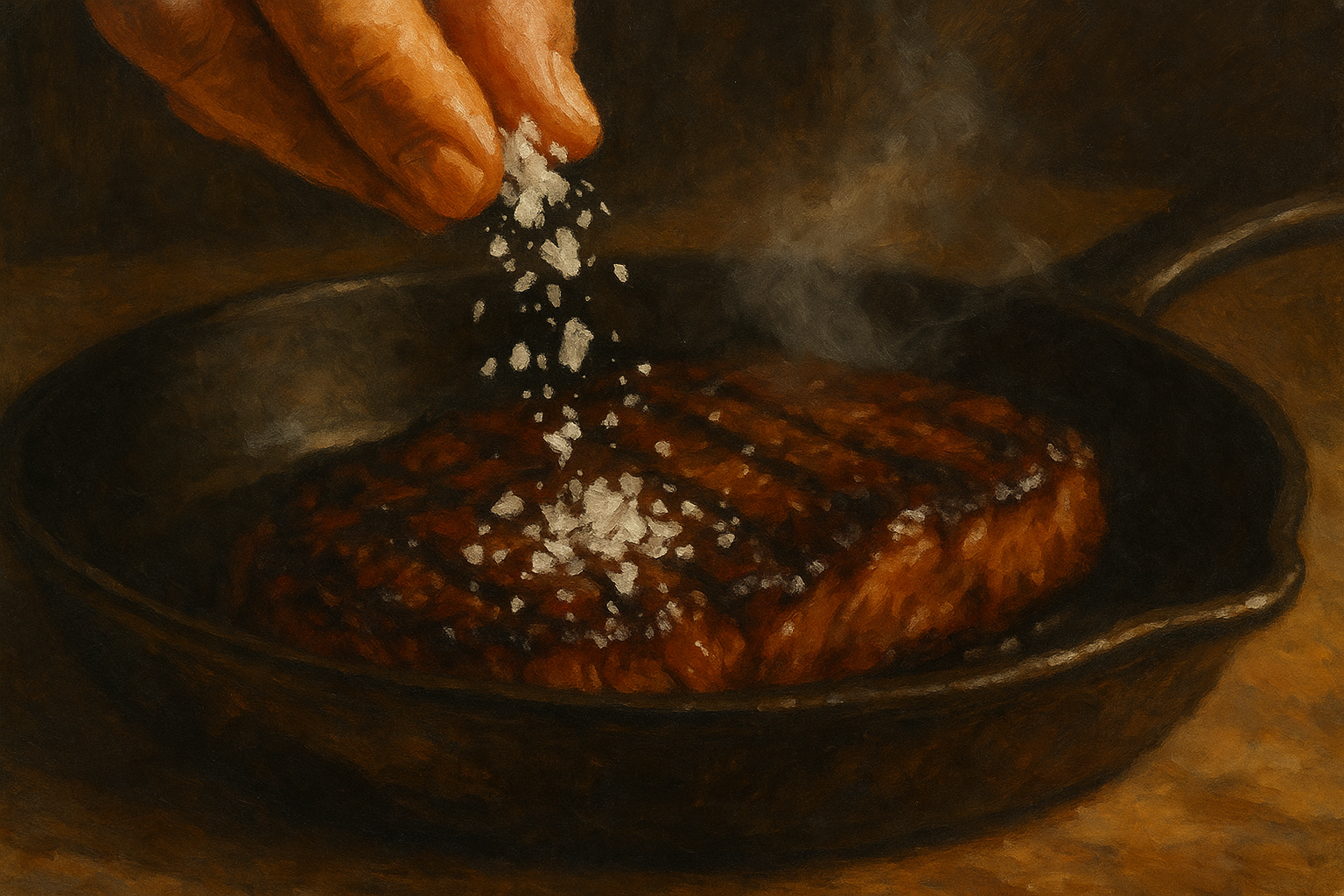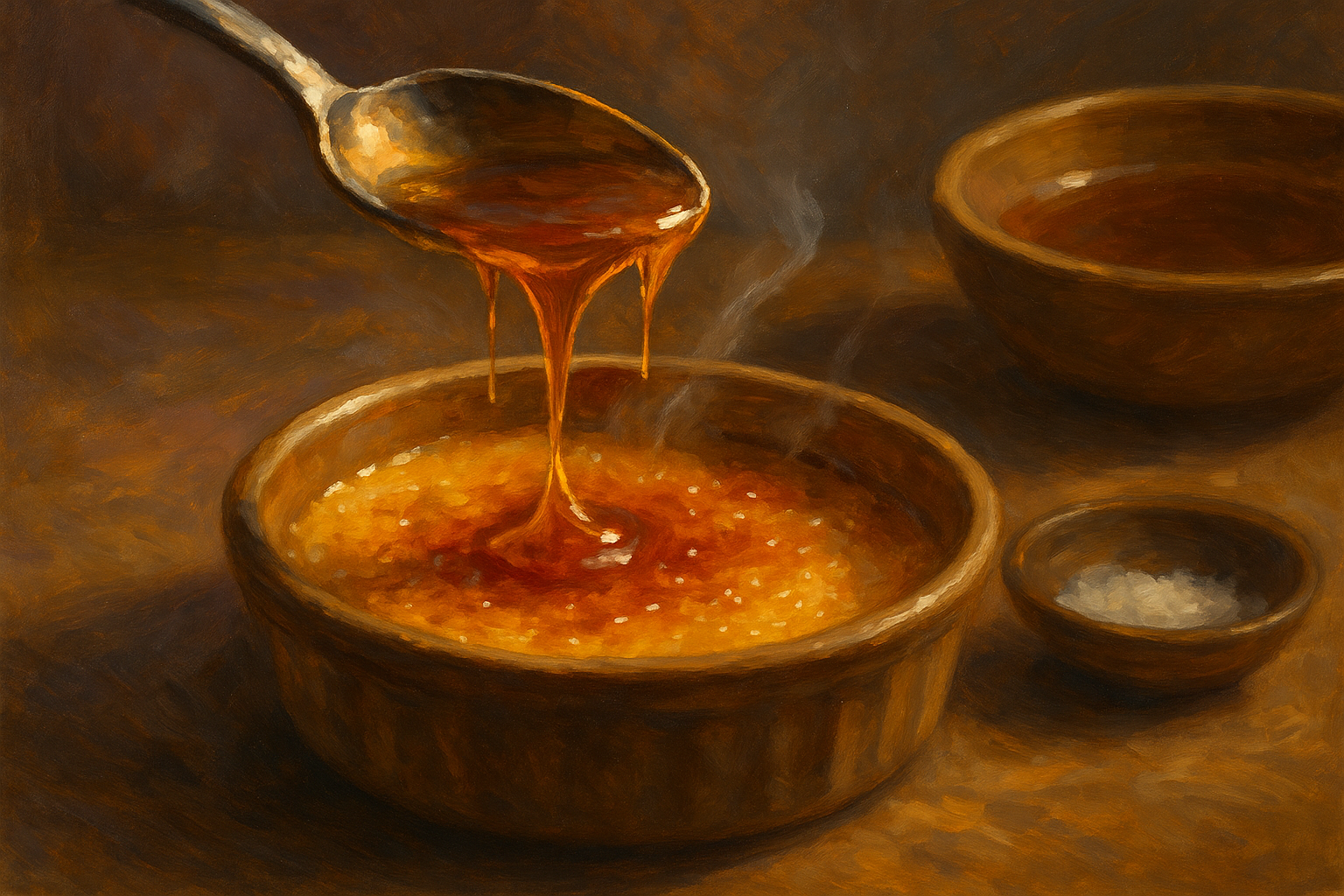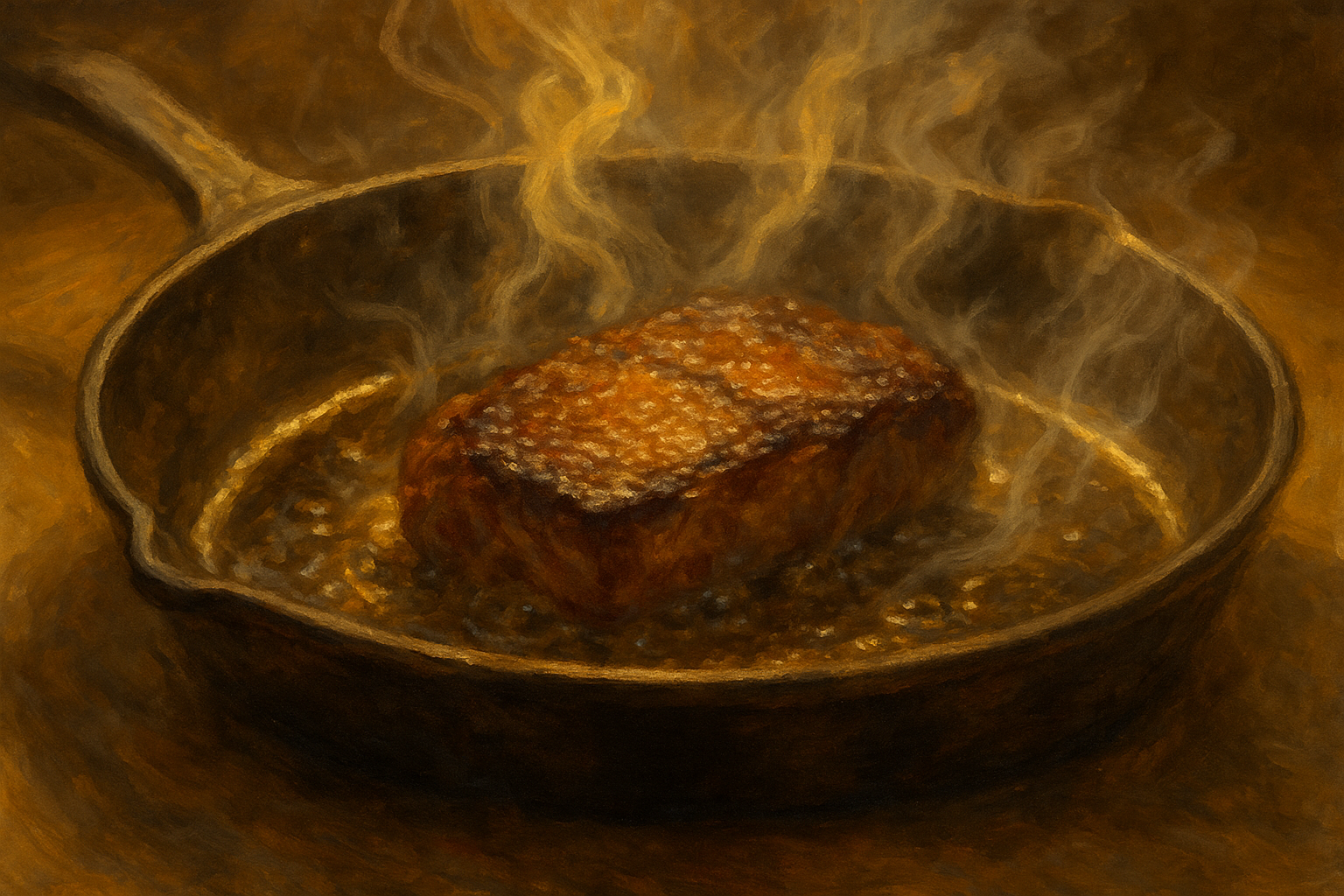
The Four Gates
Every dish passes through four gates: salt, sugar, acid, and heat.
Each one opens a different way. Each one changes how food feels, tastes, and remembers itself on your tongue.
Get them right, and the whole world inside the pan makes sense.
Get one wrong, and the rest stumble trying to fix it.
These aren’t rules. They’re forces.
Once you learn to see them, you start cooking differently — not from recipes, but from instinct.
Gate One: Salt — The Amplifier

Salt is the first and last language of taste.
It makes flavor vivid, like turning a light on in a dim room. It heightens sweetness, tames bitterness, and gives food weight.
Chemically, salt activates sodium ion channels on your tongue that suppress bitterness and enhance sweetness. That’s why unsalted soup tastes dull no matter how many vegetables are in it.
It’s also why a pinch of salt can make strawberries taste like they came from another planet.
Good cooks season twice — once early, so salt can draw out and integrate flavor, and once at the end, to add definition.
The trick is learning restraint. Salt isn’t supposed to shout. It’s supposed to finish the sentence.
Truth learned slowly: You can taste when something’s oversalted. You can feel when it’s seasoned right.
Gate Two: Sugar — The Mirror

Sugar doesn’t just sweeten. It balances.
It’s what gives bitterness context, heat a cushion, and sourness a place to land.
When sugar caramelizes, it goes through a chain of chemical reactions that produce hundreds of new flavor compounds — nutty, toasty, and complex.
That’s why caramel smells like nostalgia and toasted marshmallows make people close their eyes.
In small doses, sugar is structure. It rounds sharp flavors, binds moisture, and gives sauces that glossy finish we chase without realizing it.
Too much, and it becomes noise — syrup instead of song.
Observation: The best sweets aren’t sugary. They’re honest. They show you warmth without hiding behind it.
Gate Three: Acid — The Architect

Acid is tension in edible form.
It’s the invisible line that keeps flavor awake.
A squeeze of lemon, a splash of vinegar, a bit of fermented heat — each one triggers your salivary glands.
That moisture literally wakes up your ability to taste.
In biochemical terms, acid lowers the pH of food, increasing the volatility of aromatic compounds. Translation: it makes scent, and therefore flavor, bloom.
Every cuisine with depth has acid at its core — lime in Thai cooking, tomato in Italian, tamarind in Mexican, yogurt in Indian.
Acid doesn’t just add brightness. It gives structure to comfort, a backbone to richness.
It’s the voice that says: “Wake up, this matters.”
Lived-in truth: Most food isn’t missing flavor. It’s missing a squeeze of lemon.
Gate Four: Heat — The Transformer

Heat is the only one you can’t touch but always feel.
It’s what turns chemistry into memory.
Heat rewrites texture and unlocks flavor precursors. When proteins denature and sugars brown, the Maillard reaction begins — amino acids and reducing sugars fusing into hundreds of new molecules.
That’s what creates the crust on steak, the gold on bread, and the smell that makes you stop talking mid-sentence.
Heat also changes the emotional temperature of a dish.
Slow heat builds comfort. High heat builds drama.
It’s not just technique. It’s storytelling.
Observation: Control the heat, and everything else falls in line. Lose it, and the rest never get their chance to speak.
How They Work Together

Most good dishes aren’t about any one gate. They’re about how the four talk to each other.
Salt sharpens sugar. Sugar softens acid. Acid wakes up fat. Heat ties it all together.
A tomato sauce isn’t magic. It’s salt pulling sweetness from the tomato, acid cutting through it, and heat coaxing them to merge.
A slice of bacon is salt and heat in partnership, with a whisper of sugar from the cure.
Even coffee — roasted (heat), bitter (acid), rounded (sugar), finished with salt in the air from your own skin — works on the same scale.
When a dish feels “balanced,” it’s not perfect. It’s alive.
It’s moving between these forces the way a good song moves between tension and release.
The Memory of Flavor

Taste is chemistry at first, but memory finishes the job.
The reason a roasted chicken can smell like your childhood has nothing to do with nostalgia and everything to do with repetition.
Your brain links these four gates together every time you eat — salt for focus, sugar for comfort, acid for alertness, heat for transformation.
That’s how cooking becomes storytelling.
Every time you season, caramelize, squeeze, or sear, you’re crossing those same four thresholds.
The science is the same, but the story is always yours.
Conclusion: Learning to Taste With Attention
Cooking with intuition is really just paying attention to these four gates. Salt for balance. Sugar for body. Acid for life. Heat for truth.
You don’t master them. You learn to listen to them. Each one opens differently depending on what’s in the pan, what season it is, and who’s waiting to eat.
The chemistry explains the how. Your senses explain the when. The memory explains the why.
That’s cooking at its most human — the same four gates, every meal, every time, waiting for you to walk through.
